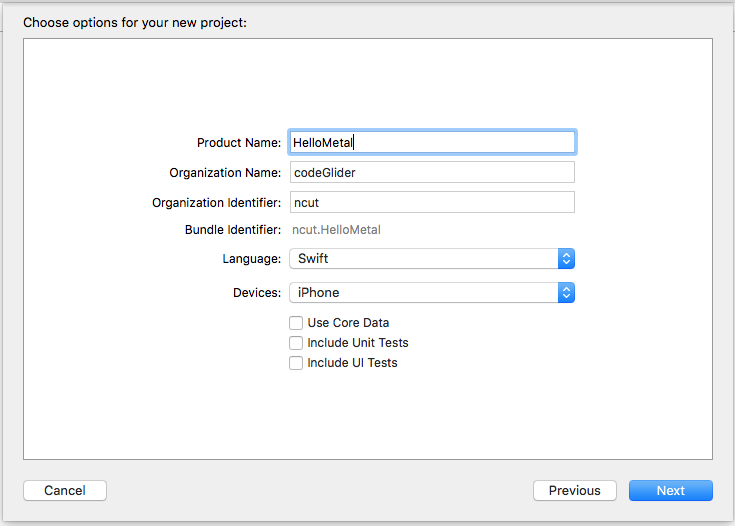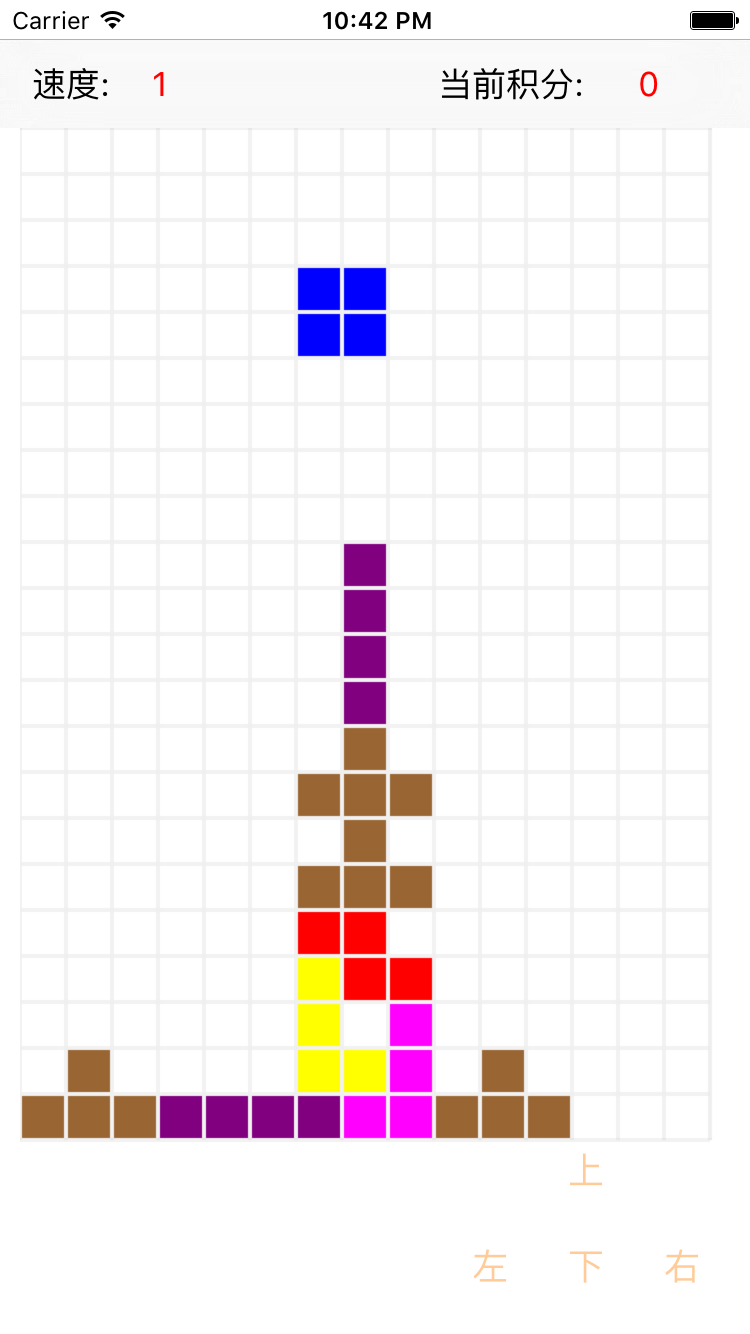【投稿】iOS 藍牙開發(二)iOS 連接外設的代碼實現

上一篇文章介紹了藍牙的技術知識,這裡我們具體說明一下中心模式的應用場景。主設備(手機去掃描連接外設,發現外設服務和屬性,操作服務和屬性的應用。一般來說,外設(藍牙設備,比如智能手環之類的東西),會由硬件工程師開發好,並定義好設備提供的服務,每個服務對於的特征,每個特征的屬性(只讀,只寫,通知等等),本文例子的業務場景,就是用一手機app去讀寫藍牙設備。
iOS連接外設的代碼實現流程
1. 建立中心角色
2. 掃描外設(discover)
3. 連接外設(connect)
4. 掃描外設中的服務和特征(discover)
- 4.1 獲取外設的services
- 4.2 獲取外設的Characteristics,獲取Characteristics的值,獲取Characteristics的Descriptor和Descriptor的值
5. 與外設做數據交互(explore and interact)
6. 訂閱Characteristic的通知
7. 斷開連接(disconnect)
准備環境
1 Xcode
2 開發證書和手機(藍牙程序需要使用使用真機調試,使用模擬器也可以調試,但是方法很蛋疼,我會放在最後說)
3 藍牙外設
實現步驟
1 導入CoreBluetooth頭文件,建立主設備管理類,設置主設備委托
#import@interface ViewController : UIViewController @interface ViewController (){ //系統藍牙設備管理對象,可以把他理解為主設備,通過他,可以去掃描和鏈接外設 CBCentralManager *manager; } - (void)viewDidLoad { [super viewDidLoad]; /* 設置主設備的委托,CBCentralManagerDelegate 必須實現的: - (void)centralManagerDidUpdateState:(CBCentralManager *)central;//主設備狀態改變的委托,在初始化CBCentralManager的適合會打開設備,只有當設備正確打開後才能使用 其他選擇實現的委托中比較重要的: - (void)centralManager:(CBCentralManager *)central didDiscoverPeripheral:(CBPeripheral *)peripheral advertisementData:(NSDictionary *)advertisementData RSSI:(NSNumber *)RSSI; //找到外設的委托 - (void)centralManager:(CBCentralManager *)central didConnectPeripheral:(CBPeripheral *)peripheral;//連接外設成功的委托 - (void)centralManager:(CBCentralManager *)central didFailToConnectPeripheral:(CBPeripheral *)peripheral error:(NSError *)error;//外設連接失敗的委托 - (void)centralManager:(CBCentralManager *)central didDisconnectPeripheral:(CBPeripheral *)peripheral error:(NSError *)error;//斷開外設的委托 */ //初始化並設置委托和線程隊列,最好一個線程的參數可以為nil,默認會就main線程 manager = [[CBCentralManager alloc]initWithDelegate:self queue:dispatch_get_main_queue()];
2 掃描外設(discover),掃描外設的方法我們放在centralManager成功打開的委托中,因為只有設備成功打開,才能開始掃描,否則會報錯。
-(void)centralManagerDidUpdateState:(CBCentralManager *)central{
switch (central.state) {
case CBCentralManagerStateUnknown:
NSLog(@">>>CBCentralManagerStateUnknown");
break;
case CBCentralManagerStateResetting:
NSLog(@">>>CBCentralManagerStateResetting");
break;
case CBCentralManagerStateUnsupported:
NSLog(@">>>CBCentralManagerStateUnsupported");
break;
case CBCentralManagerStateUnauthorized:
NSLog(@">>>CBCentralManagerStateUnauthorized");
break;
case CBCentralManagerStatePoweredOff:
NSLog(@">>>CBCentralManagerStatePoweredOff");
break;
case CBCentralManagerStatePoweredOn:
NSLog(@">>>CBCentralManagerStatePoweredOn");
//開始掃描周圍的外設
/*
第一個參數nil就是掃描周圍所有的外設,掃描到外設後會進入
- (void)centralManager:(CBCentralManager *)central didDiscoverPeripheral:(CBPeripheral *)peripheral advertisementData:(NSDictionary *)advertisementData RSSI:(NSNumber *)RSSI;
*/
[manager scanForPeripheralsWithServices:nil options:nil];
break;
default:
break;
}
}
//掃描到設備會進入方法
-(void)centralManager:(CBCentralManager *)central didDiscoverPeripheral:(CBPeripheral *)peripheral advertisementData:(NSDictionary *)advertisementData RSSI:(NSNumber *)RSSI{
NSLog(@"當掃描到設備:%@",peripheral.name);
//接下來可以連接設備
}3 連接外設(connect)
//掃描到設備會進入方法
-(void)centralManager:(CBCentralManager *)central didDiscoverPeripheral:(CBPeripheral *)peripheral advertisementData:(NSDictionary *)advertisementData RSSI:(NSNumber *)RSSI{
//接下連接我們的測試設備,如果你沒有設備,可以下載一個app叫lightbule的app去模擬一個設備
//這裡自己去設置下連接規則,我設置的是P開頭的設備
if ([peripheral.name hasPrefix:@"P"]){
/*
一個主設備最多能連7個外設,每個外設最多只能給一個主設備連接,連接成功,失敗,斷開會進入各自的委托
- (void)centralManager:(CBCentralManager *)central didConnectPeripheral:(CBPeripheral *)peripheral;//連接外設成功的委托
- (void)centralManager:(CBCentralManager *)central didFailToConnectPeripheral:(CBPeripheral *)peripheral error:(NSError *)error;//外設連接失敗的委托
- (void)centralManager:(CBCentralManager *)central didDisconnectPeripheral:(CBPeripheral *)peripheral error:(NSError *)error;//斷開外設的委托
*/
//連接設備
[manager connectPeripheral:peripheral options:nil];
}
}
//連接到Peripherals-成功
- (void)centralManager:(CBCentralManager *)central didConnectPeripheral:(CBPeripheral *)peripheral
{
NSLog(@">>>連接到名稱為(%@)的設備-成功",peripheral.name);
}
//連接到Peripherals-失敗
-(void)centralManager:(CBCentralManager *)central didFailToConnectPeripheral:(CBPeripheral *)peripheral error:(NSError *)error
{
NSLog(@">>>連接到名稱為(%@)的設備-失敗,原因:%@",[peripheral name],[error localizedDescription]);
}
//Peripherals斷開連接
- (void)centralManager:(CBCentralManager *)central didDisconnectPeripheral:(CBPeripheral *)peripheral error:(NSError *)error{
NSLog(@">>>外設連接斷開連接 %@: %@\n", [peripheral name], [error localizedDescription]);
}4 掃描外設中的服務和特征(discover)
設備連接成功後,就可以掃描設備的服務了,同樣是通過委托形式,掃描到結果後會進入委托方法。但是這個委托已經不再是主設備的委托(CBCentralManagerDelegate),而是外設的委托(CBPeripheralDelegate),這個委托包含了主設備與外設交互的許多 回叫方法,包括獲取services,獲取characteristics,獲取characteristics的值,獲取characteristics的Descriptor,和Descriptor的值,寫數據,讀rssi,用通知的方式訂閱數據等等。
4.1 獲取外設的services
//連接到Peripherals-成功
- (void)centralManager:(CBCentralManager *)central didConnectPeripheral:(CBPeripheral *)peripheral
{
NSLog(@">>>連接到名稱為(%@)的設備-成功",peripheral.name);
//設置的peripheral委托CBPeripheralDelegate
//@interface ViewController : UIViewController
[peripheral setDelegate:self];
//掃描外設Services,成功後會進入方法:-(void)peripheral:(CBPeripheral *)peripheral didDiscoverServices:(NSError *)error{
[peripheral discoverServices:nil];
}
//掃描到Services
-(void)peripheral:(CBPeripheral *)peripheral didDiscoverServices:(NSError *)error{
// NSLog(@">>>掃描到服務:%@",peripheral.services);
if (error)
{
NSLog(@">>>Discovered services for %@ with error: %@", peripheral.name, [error localizedDescription]);
return;
}
for (CBService *service in peripheral.services) {
NSLog(@"%@",service.UUID);
//掃描每個service的Characteristics,掃描到後會進入方法: -(void)peripheral:(CBPeripheral *)peripheral didDiscoverCharacteristicsForService:(CBService *)service error:(NSError *)error
[peripheral discoverCharacteristics:nil forService:service];
}
} 4.2 獲取外設的Characteristics,獲取Characteristics的值,獲取Characteristics的Descriptor和Descriptor的值
//掃描到Characteristics
-(void)peripheral:(CBPeripheral *)peripheral didDiscoverCharacteristicsForService:(CBService *)service error:(NSError *)error{
if (error)
{
NSLog(@"error Discovered characteristics for %@ with error: %@", service.UUID, [error localizedDescription]);
return;
}
for (CBCharacteristic *characteristic in service.characteristics)
{
NSLog(@"service:%@ 的 Characteristic: %@",service.UUID,characteristic.UUID);
}
//獲取Characteristic的值,讀到數據會進入方法:-(void)peripheral:(CBPeripheral *)peripheral didUpdateValueForCharacteristic:(CBCharacteristic *)characteristic error:(NSError *)error
for (CBCharacteristic *characteristic in service.characteristics){
{
[peripheral readValueForCharacteristic:characteristic];
}
}
//搜索Characteristic的Descriptors,讀到數據會進入方法:-(void)peripheral:(CBPeripheral *)peripheral didDiscoverDescriptorsForCharacteristic:(CBCharacteristic *)characteristic error:(NSError *)error
for (CBCharacteristic *characteristic in service.characteristics){
[peripheral discoverDescriptorsForCharacteristic:characteristic];
}
}
//獲取的charateristic的值
-(void)peripheral:(CBPeripheral *)peripheral didUpdateValueForCharacteristic:(CBCharacteristic *)characteristic error:(NSError *)error{
//打印出characteristic的UUID和值
//!注意,value的類型是NSData,具體開發時,會根據外設協議制定的方式去解析數據
NSLog(@"characteristic uuid:%@ value:%@",characteristic.UUID,characteristic.value);
}
//搜索到Characteristic的Descriptors
-(void)peripheral:(CBPeripheral *)peripheral didDiscoverDescriptorsForCharacteristic:(CBCharacteristic *)characteristic error:(NSError *)error{
//打印出Characteristic和他的Descriptors
NSLog(@"characteristic uuid:%@",characteristic.UUID);
for (CBDescriptor *d in characteristic.descriptors) {
NSLog(@"Descriptor uuid:%@",d.UUID);
}
}
//獲取到Descriptors的值
-(void)peripheral:(CBPeripheral *)peripheral didUpdateValueForDescriptor:(CBDescriptor *)descriptor error:(NSError *)error{
//打印出DescriptorsUUID 和value
//這個descriptor都是對於characteristic的描述,一般都是字符串,所以這裡我們轉換成字符串去解析
NSLog(@"characteristic uuid:%@ value:%@",[NSString stringWithFormat:@"%@",descriptor.UUID],descriptor.value);
}5 把數據寫到Characteristic中
//寫數據
-(void)writeCharacteristic:(CBPeripheral *)peripheral
characteristic:(CBCharacteristic *)characteristic
value:(NSData *)value{
//打印出 characteristic 的權限,可以看到有很多種,這是一個NS_OPTIONS,就是可以同時用於好幾個值,常見的有read,write,notify,indicate,知知道這幾個基本就夠用了,前連個是讀寫權限,後兩個都是通知,兩種不同的通知方式。
/*
typedef NS_OPTIONS(NSUInteger, CBCharacteristicProperties) {
CBCharacteristicPropertyBroadcast = 0x01,
CBCharacteristicPropertyRead = 0x02,
CBCharacteristicPropertyWriteWithoutResponse = 0x04,
CBCharacteristicPropertyWrite = 0x08,
CBCharacteristicPropertyNotify = 0x10,
CBCharacteristicPropertyIndicate = 0x20,
CBCharacteristicPropertyAuthenticatedSignedWrites = 0x40,
CBCharacteristicPropertyExtendedProperties = 0x80,
CBCharacteristicPropertyNotifyEncryptionRequired NS_ENUM_AVAILABLE(NA, 6_0) = 0x100,
CBCharacteristicPropertyIndicateEncryptionRequired NS_ENUM_AVAILABLE(NA, 6_0) = 0x200
};
*/
NSLog(@"%lu", (unsigned long)characteristic.properties);
//只有 characteristic.properties 有write的權限才可以寫
if(characteristic.properties & CBCharacteristicPropertyWrite){
/*
最好一個type參數可以為CBCharacteristicWriteWithResponse或type:CBCharacteristicWriteWithResponse,區別是是否會有反饋
*/
[peripheral writeValue:value forCharacteristic:characteristic type:CBCharacteristicWriteWithResponse];
}else{
NSLog(@"該字段不可寫!");
}
}6 訂閱Characteristic的通知
//設置通知
-(void)notifyCharacteristic:(CBPeripheral *)peripheral
characteristic:(CBCharacteristic *)characteristic{
//設置通知,數據通知會進入:didUpdateValueForCharacteristic方法
[peripheral setNotifyValue:YES forCharacteristic:characteristic];
}
//取消通知
-(void)cancelNotifyCharacteristic:(CBPeripheral *)peripheral
characteristic:(CBCharacteristic *)characteristic{
[peripheral setNotifyValue:NO forCharacteristic:characteristic];
}7 斷開連接(disconnect)
//停止掃描並斷開連接
-(void)disconnectPeripheral:(CBCentralManager *)centralManager
peripheral:(CBPeripheral *)peripheral{
//停止掃描
[centralManager stopScan];
//斷開連接
[centralManager cancelPeripheralConnection:peripheral];
}8 模擬器藍牙調試,慎用,最好還是用真機去調試。
由於在iPhone 4s之後的iOS才支持BLE,新一代的這些iOS設備又都不便宜,在做測試的時候,用iOS模擬器進行調試,可以節約一些開發成本。怎麼在iOS模擬器上調試BLE,
蘋果最初給出的說明是,支持BLE的mac機子上可以用模擬器進行調試,並給出了一份技術文檔(傳送門),惡心的是,後來蘋果抽風,又把這份文檔移除,
並且把iOS 7.0的模擬器上對BLE的支持也移除掉了(難道是想讓大家多買設備測試?Apple sucks.)後面,網上搜了一下,解決辦法如下:
1. 買一個CSR藍牙4.0 USB適配器(某寶上大概30塊錢),在機子上插入該物(你懂的)
2. 在Terminal下敲入sudo nvram bluetoothHostControllerSwitchBehavior="never" , 重啟Mac。
3. 用XCode 4.6調試代碼,在iOS 6.1的模擬器上跑程序(用XCode 5.0跑iOS 7.0模擬器會拋異常,原因上面詳訴過了,Apple sucks,你懂的)
如何降低模擬器的iOS版本呢?
XCode->Preferences->Downloads裡面有很多simulators你可以下載
選擇個6.1的下載好了
代碼下載:
我博客中大部分示例代碼都上傳到了github,地址是:https://github.com/coolnameismy/demo
本文代碼存放目錄是BleDemo
如果大家支持,請follow我的github賬號,並star我的項目,有其他問題可以在blog中給我留言 blog的RSS訂閱
- 【投稿】如何在運行時改變App的圖標
- 【投稿】iOS藍牙開發(一)藍牙相關基礎知識
- 【投稿】使用 fastlane 實現 iOS 持續集成
- 【投稿】用同一個工程創建兩個不同版本的應用
- 【投稿】友好的 ContainerView & AutoLayout 資料推薦
- 【投稿】CocoaPods的一些略為高級一丁點的使用
- 【投稿】Xcode 創建靜態庫和動態庫
- 打造Objective
- 開發該選擇Blocks還是Delegates
- iOS相冊Moment功能的優化方案
- Cocoapods 應用第二部分
- iOS 9:快速讓你的APP支持spotlight搜索
- 【投稿】UIAppearance教程:入門
- 【投稿】Xcode插件XBookmark開發筆記
- 【投稿】使用CALayer的Mask實現注水動畫效果




